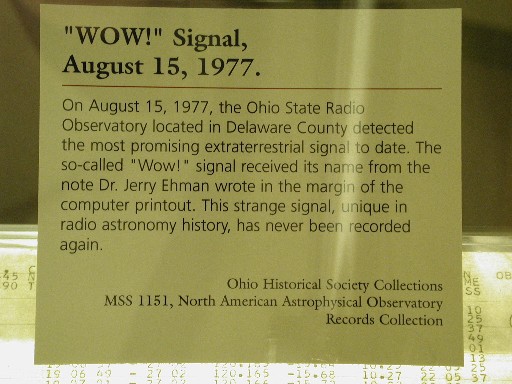

‘There are billions of stars in the galaxy, and we have to figure out some way to narrow them down,’ she added. ‘I think this is perfectly worth doing because we want to point our instruments in the direction of things we think are interesting,’ Rebecca Charbonneau, a historian who studies SETI at the Harvard-Smithsonian Center for Astrophysics and who wasn’t involved in the work, told Live Science. On August 15, 1977, a strong narrowband radio signal was received by Ohio State Universitys Big Ear radio telescope, in the United States, then assigned to. 15, 1977, astronomers using Ohio State University’s Big Ear radio telescope detected the. The project consists of an updated message that will be beamed out into the cosmos in the hope o f being picked up by alien receivers in an updated version of the original Arecibo message that was transmitted back in 1974. 15: Wow Mystery Signal Boosts Search for E.T. Researchers have since repeatedly searched for follow-ups originating from the same place, but they have turned up empty, according to a history from the American Astronomical Society.ĭespite warnings against it, a group of scientists are embarking on a new project to try and contact extraterrestrial life.

‘Since hydrogen is the most abundant element in the universe, there is good logic in guessing that an intelligent civilization within our Milky Way galaxy desirous of attracting attention to itself might broadcast a strong narrowband beacon signal at or near the frequency of the neutral hydrogen line,’ Ehman wrote in a report in honor of its 30th anniversary. The now-deconstructed Big Ear telescope looked for messages at the electromagnetic frequency band of 1420.4056 megahertz, which is produced by the element hydrogen. The 2019 signal was detected by the radio telescope as it spent 26 hours listening in the region of Proxima Centauri. Stunned, the astronomer who observed it wrote 'Wow' on the readout. Upon seeing a printout of an anomalous signal, at the Ohio State University’s Big Ear telescope astronomer Jerry Ehman scribbled ‘Wow!’ on the page, giving the event its name. In 1977, a radio telescope recorded a 72-second signal coming from the direction of the constellation Sagittarius. Some believe it was our first interception of an alien. Scientist’s warning as UK’s nearest supervolcano edges closer to eruption On 15 August 1977, radio astronomers using the Big Ear radio telescope at Ohio State University picked up a powerful signal from space.


 0 kommentar(er)
0 kommentar(er)
